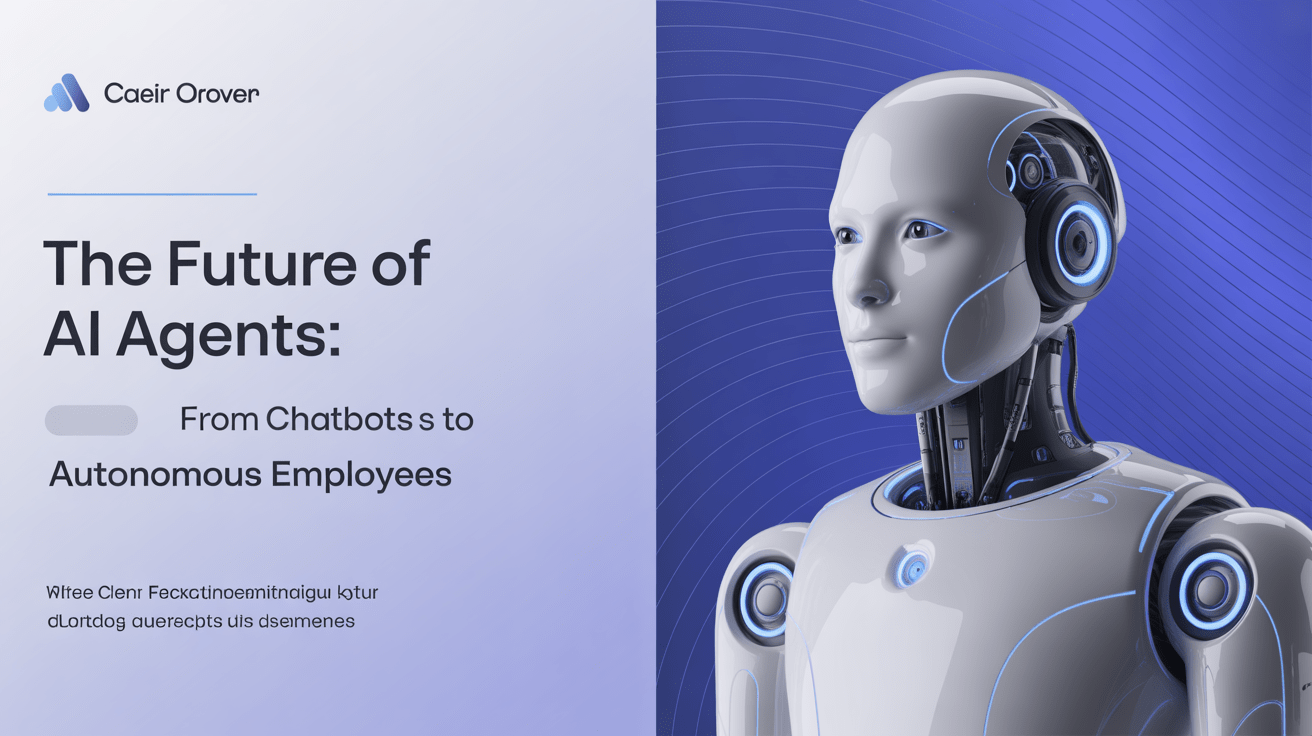
Introduction
In the rapidly evolving landscape of artificial intelligence, conversational agents or chatbots have become pivotal tools unlocking new forms of human-computer interaction.Among the forefront contenders in this domain are OpenAI’s ChatGPT and Anthropic’s Claude AI. Both models exhibit elegant natural language processing capabilities, but a key differentiator attracting immense interest among developers, enterprises, and AI researchers alike is their ability to understand and maintain context.
Contextual comprehension in conversational AI drives user satisfaction, task efficiency, and the fidelity of interactions, especially when chatbots move beyond scripted exchanges to dynamic, multi-turn dialogues. This article offers a complete, expert-level comparison of ChatGPT and Claude AI, focusing sharply on which chatbot better grasps and processes contextual facts across complex conversational scenarios.
understanding ChatGPT vs Claude AI
At the heart of the ChatGPT vs Claude AI debate lies the essential challenge of contextual understanding - an AI’s capacity to interpret language in its situational, pragmatic, and conversational depth over multiple interaction turns.Both chatbots leverage transformer-based language models, but they differ in training philosophies, architectural nuances, and safety designs.
OpenAI’s chatgpt, built on the GPT (Generative Pre-trained Transformer) architecture, champions a large-scale unsupervised pretraining approach followed by supervised fine-tuning combined with reinforcement learning from human feedback (RLHF). This methodology, thoroughly documented on OpenAI’s research portal, emphasizes versatility across tasks, enabling ChatGPT to assimilate broad linguistic patterns and generate highly coherent and contextually aware responses.
In contrast, Claude AI, developed by anthropic, adopts a safety-centric training ideology grounded in constitutional AI principles. Claude’s architecture incorporates training regimes that emphasize context retention while mitigating undesired outputs through interpretability and human-aligned ethical guardrails, positioning it distinctively among contemporary chatbots. such advances are detailed in Anthropic’s research releases, highlighting Claude’s nuance-sensitive design.
Both systems operate within the extensive neural transformer framework but diverge in dataset curation, dialog management strategies, and reinforcement tuning nuances – each component critically shaping their contextual understanding capabilities.
Technical Foundation
The backbone of both ChatGPT and Claude AI is the transformer architecture, which excels at capturing long-range dependencies in textual data via self-attention mechanisms. However, their implementations show crucial differences in scale, training data diversity, and interaction algorithms.
ChatGPT’s technical foundation is the GPT-4 family of models,which integrate trillion-parameter scales,extensive training corpora including web text,books,code snippets,and curated conversational datasets. GPT-4 optimizes cross-attention heads to maintain conversation threading, context window utilization (currently extending to 8,000 tokens and beyond), and query-based memory access mechanisms for sustained interaction coherence.This architecture’s evolution and technical specifications have been dissected in reports by Microsoft Research.
Claude AI, on the other hand, employs a variant of the transformer model fine-tuned explicitly with constitutional AI techniques that embed a rule-based safety layer, which enforces ethical and coherent outputs while dynamically managing conversational context windows. Claude’s training emphasizes curated dialogues and adversarial prompt mitigation strategies,enabling it to maintain a more stable contextual thread even across longer multi-turn conversations that would overwhelm conventional transformers. Technical insights into Claude’s architecture and safety mechanisms are accessible via Anthropic’s publications on arXiv.
At the intersection of these models lies an increasing reliance on cloud-based,distributed computing infrastructures such as those from Amazon Web Services and google Cloud, supporting real-time inference with minimal latencies while leveraging accelerated GPU clusters and AI-specific hardware like NVIDIA’s A100 Tensor Core GPUs for scalable deployments.

Real-World Applications
The practical implications of robust contextual understanding manifest across diverse industries,from customer support to creative content generation,healthcare,education,and advanced research assistance. ChatGPT and claude AI have found adoption among technology giants, startups, and enterprises aiming to augment workflows and improve user engagement.
ChatGPT’s flexible API and integrations into platforms like Microsoft’s Azure Bot Services and GitHub Copilot showcase its applicability in software progress, natural language interfaces, and automation of knowledge work. Real-world usage by companies such as NVIDIA, leveraging ChatGPT to streamline AI model documentation and assist programming tasks, underscores its contextual adeptness.
Simultaneously occurring, Claude AI focuses strongly on ethical deployments in sensitive sectors – deploying nuanced conversational AI in mental health chatbots, compliance audits, and regulated environments where safety and interpretability matter critically. Enterprises exploring AI-powered document analysis and dialogue systems for customer care have experimented with Claude to exploit its enhanced contextual memory and risk mitigation. The financial services sector, as an example, benefits from Claude’s ability to parse contextually complex client queries while adhering to tight regulatory constraints.
Cross-industry case studies, such as conversational agents transforming virtual assistants or AI tutors, reveal the comparative edge of each platform in specific contextual tasks – with ChatGPT excelling in diverse topic breadth, and Claude AI demonstrating resilience in ethically charged interactions.
advantages and Business Impact
the fundamental advantage offered by both ChatGPT and Claude AI lies in their ability to reduce friction in digital dialogue and automate complex tasks that traditionally required human intervention. Analysts from Gartner position conversational AI as a multi-billion-dollar driver of enterprise innovation, primarily due to productivity gains and customer satisfaction enhancements.
ChatGPT’s widespread adoption has lead to reported performance gains of up to 30% in customer support automation and important cost reductions by offloading repetitive tasks, as documented in recent market research by Statista.OpenAI’s improvements in contextual understanding minimize erroneous outputs and reduce user frustration,increasing chatbot stickiness and broad applicability.
Claude AI’s business impact is measured by its ability to elevate safety and trust – a rising priority as regulators scrutinize AI outputs. Companies deploying Claude report reduced risk exposure and lower incidences of harmful or misleading responses. This archetype enhances AI adoption in regulated sectors, translating directly to innovation acceleration without compromising governance or compliance, a balance emphasized in Harvard Business review’s treatises on AI ethics.
Challenges and Ethical Considerations
No comprehensive evaluation of ChatGPT and claude AI’s contextual prowess can sidestep the ethical and technical challenges inherent in large language models. Despite advances, ambiguous or conflicting inputs can cause models to misunderstand or “hallucinate” facts, eroding user trust.
ChatGPT, though state-of-the-art, occasionally produces responses out of alignment with real-world facts or ethical norms. OpenAI has invested heavily in RLHF techniques to curb such behaviors but acknowledges ongoing vulnerabilities documented extensively in academic research. Privacy considerations especially arise when these models interact with sensitive user data, calling for strict data governance frameworks.
Claude AI attempts to mitigate such risks through constitutional AI – a philosophy enforcing model behavior according to ethical “principles” checked at inference time, but this approach imposes trade-offs in flexibility and sometimes leads to overly cautious or evasive replies. Ethical trade-offs between model freedom and safe contextual understanding remain a subject of debate across research forums.
Both deployments face challenges in bias reinforcement, model interpretability, and the need for continuous fine-tuning as domains evolve, necessitating interdisciplinary collaboration between AI engineers, ethicists, and policy makers.
Market Trends and Future Vision
The AI chatbot domain is poised for exponential growth, fueled by advances in artificial intelligence, cloud computing, and natural language understanding. A clear market trend illustrates a move towards hybrid models combining large language models with retrieval-based systems to improve factual grounding and reduce hallucinations.
Investment flows into conversational AI startups, including those developing modular or domain-specific variants of ChatGPT and Claude, reflect investor confidence documented on TechCrunch.the competitive landscape encourages innovation in multi-modal capabilities, personalized AI assistants, and tighter cloud integration to serve industries’ custom requirements.
Future directions also emphasize interpretability enhancements, prompting research towards explainable AI frameworks that allow users and developers to trace contextual decisions within chatbots. The convergence of AI with blockchain for secure data provenance and the embedding of cybersecurity layers to guard against adversarial manipulation form critical research frontiers.
Reports from The Verge indicate that next-generation AI chatbots will incorporate adaptive learning capabilities,enhancing contextual agility in real-time interactions,essentially minimizing the distinction between ChatGPT and Claude’s strengths over time.
Expert Perspectives
Industry leaders provide enlightening commentary on the contextual capabilities of ChatGPT and Claude AI. Sam Altman, CEO of OpenAI, underscored in a keynote the importance of “embedding deep contextual awareness across conversations to empower meaningful human-AI collaboration” (OpenAI blog).
Dario Amodei, co-founder of Anthropic, articulated that “Robust context understanding isn’t just a technical hurdle; it is a crucial element for ethical AI deployment.Claude aims to bridge intelligent dialogue with principled safety” as reported in an interview by Wired.
Leading AI ethicist Timnit Gebru has emphasized the imperative for openness around model decision-making pathways, advocating for enhanced contextual explainability as a route to mitigate harm in AI chatbot outputs (HBR Technology).
FAQs
Q: How is ChatGPT vs claude AI transforming the tech industry?
A: According to Wired, the competition between ChatGPT and Claude AI represents a paradigm shift driving unprecedented automation, improving human-computer interactions through superior contextual understanding and enhanced safety features.
Q: Which chatbot has a larger context window?
A: ChatGPT (especially GPT-4) currently supports context windows up to 8,000 tokens and beyond, while Claude AI’s contextual memory is optimized through architectural safety layers allowing efficient long conversation retention, albeit sometimes more conservatively managed.
Q: What ethical safeguards differentiate Claude AI from ChatGPT?
A: Claude AI employs constitutional AI,a framework focused on embedding ethical principles directly within model behavior during runtime,whereas ChatGPT relies more heavily on RLHF complemented by content moderation systems.
conclusion
The duel of ChatGPT vs Claude AI over which chatbot better understands context reveals nuanced differences grounded in their design philosophies, technical architectures, and deployment objectives. ChatGPT’s sweeping adaptability and context-window scalability make it a versatile powerhouse across a broad spectrum of applications. Claude AI’s principled approach emphasizes safer and ethically attuned conversation management, particularly vital for sensitive domains.
As conversational AI technologies mature, the frontier will no longer be solely about context retention magnitude but contextual intelligence-how these models reason, interpret ambiguities, and align responses with evolving user intents and societal norms. Developers, investors, and organizations focusing on AI-driven innovation must navigate this evolving landscape with a keen understanding of both technological capabilities and ethical imperatives.
Ultimately, the future will likely see hybrid models drawing on strengths from both approaches, creating conversational agents that not only remember but truly understand the multifaceted contexts they engage with-a crucial transformation shaping the next decade of artificial intelligence and human-computer synergy.
Disclaimer: This article is for educational and informational purposes only. The content reflects industry analysis and does not constitute financial or business advice.






